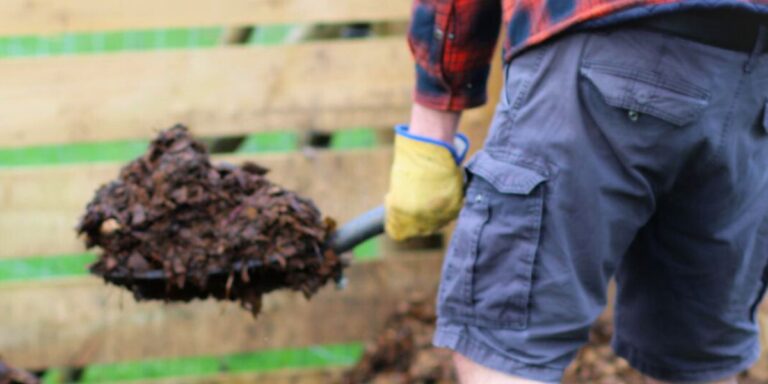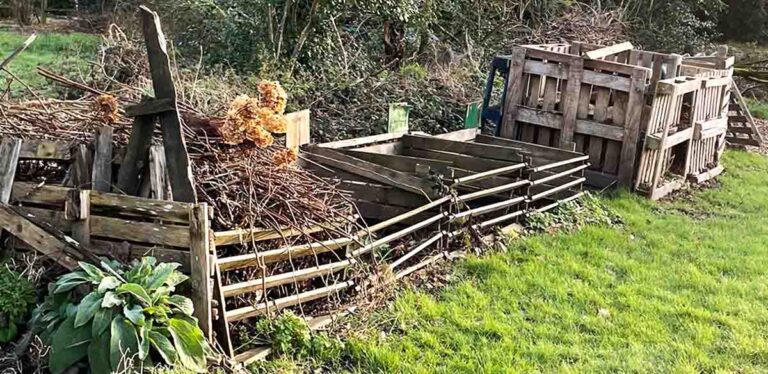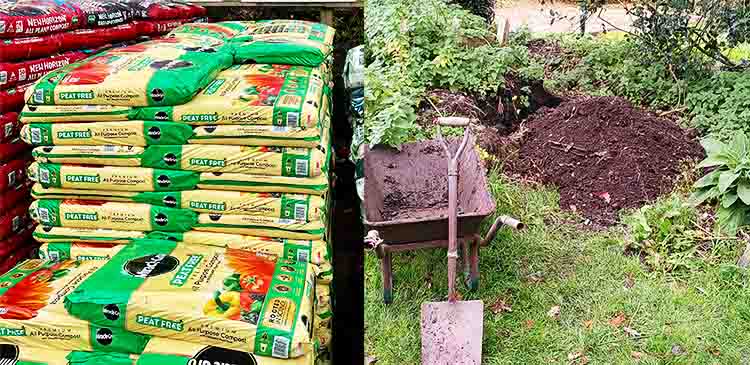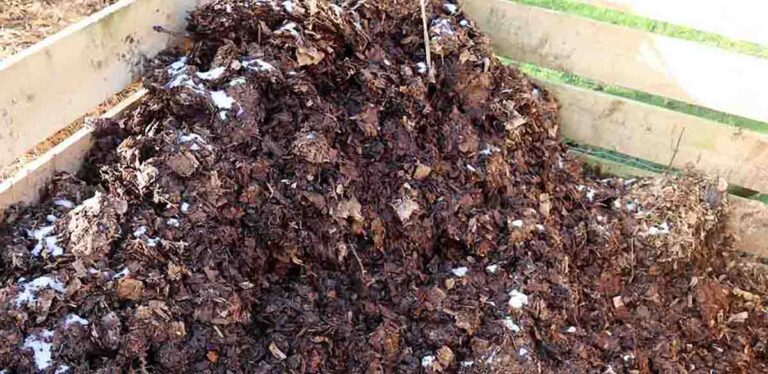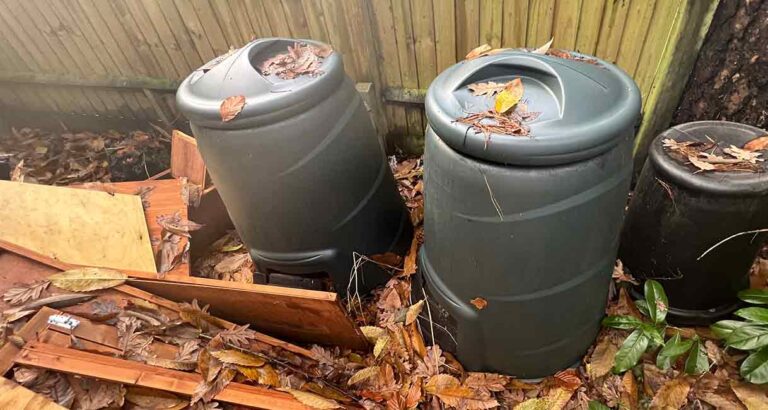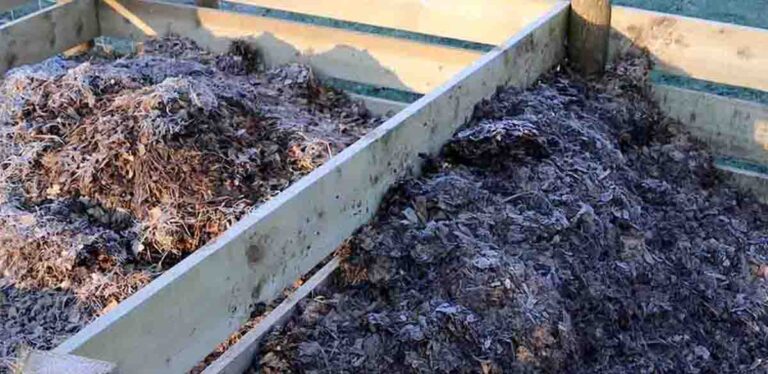What’s Happening Inside Your Compost Pile?
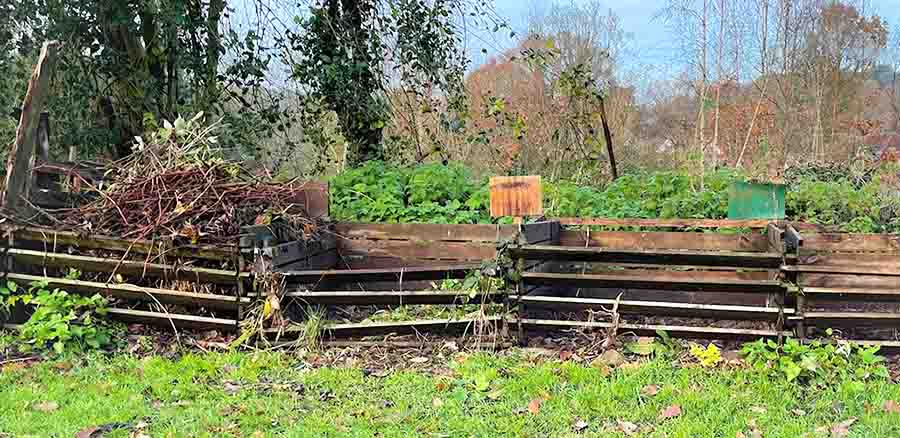
What’s going on inside your compost pile? It may look pretty inert from the outside, but the interior of a well-maintained compost bin is a hotbed of activity. Of course you can make great compost without understanding exactly how it happened. But all those processes taking place inside your heap – and the critters calling it home – are interesting! It’s a fun and fascinating world in there, so let’s take a closer look.
- The timeline of a compost heap
- What’s happening inside your compost pile
- All the things living in your compost heap
- What if nothing seems to be going on inside your compost?
The timeline of a compost heap
At the most basic level, what’s happening inside your composter is simple. If everything is going to plan, then the waste matter you’ve added to it is decomposing into rich humus. Humus is the espresso-colored organic matter left behind when plant and animal matter decays. It’s full of minerals and vital nutrients for plants, and it has the perfect structure for holding moisture and supporting growing root systems. This process of decomposition is caused by billions of bacteria digesting their way through your heap. As they work, they also generate huge amounts of heat. If you plunge a thermometer on a long stem into the center of your pile, you can even monitor your compost’s progress by the internal temperature.
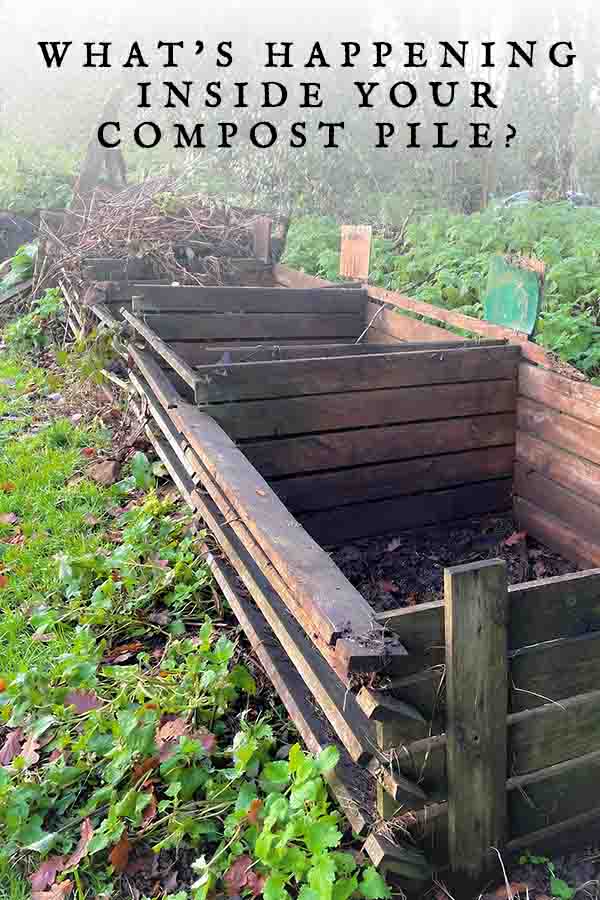
In traditional composting, if all the conditions are favorable, the interior temperature of your pile will eventually peak between 110 and 150ºF. To turn the whole pile into compost faster, mixing it after that peak will cause the temperature to rise again. This can be repeated, until mixing the compost stops triggering another temperature spike. At that point, the composting bacteria have run out of non-decomposed matter to consume, and your compost is ready to use! Getting to this point can take as little as a month, or as many as 6 months, depending on factors like:
- The volume of your heap
- The ratio of green to brown material
- How much moisture there is inside the heap
- And how warm the weather is
If the heap isn’t mixed, and the temperature at the core only peaks once, the rest of the heap will continue to decompose, but it will take longer – anything from 9 months to 2 years!
What’s happening inside your compost pile
So at the simplest level, the material in your heap is being broken down by bacteria, and the heat being released is a useful gauge of how far along that process is. But there are other fascinating processes going on as well.
- Different types of bacteria are tag-teaming through your waste
- Your pile is shrinking
- Weeds and pathogens are being cooked
Different types of bacteria are tag-teaming through your waste
At first, your waste is being churned and turned into compost by mesophilic bacteria. Mesophilic means ‘preferring the middle ground’. And in this context, it means bacteria which like intermediate temperatures. They are also aerobic, which means they need oxygen. They consume oxygen and organic matter, and use it to make energy. Compost is what they leave behind at the end of that process.
Mesophilic bacteria are very efficient at decomposing waste, but becomes their undoing. The process of turning oxygen from the air and carbon from organic matter into energy also releases a lot of heat. Since the center of your compost heap is pretty well insulated, the heat builds, and builds. When it reaches about 105ºF, the mesophilic bacteria start to die off.
They’re replaced by thermophilic (heat-loving) bacteria, which pick up where the mesophilic bacteria left off, consuming oxygen and organic waste, and turning it into compost. They continue releasing heat, and the core temperature of your heap can climb as high as 165ºF. However, once conditions exceed 150ºF, even thermophilic bacteria start to die, and you risk being left with a ‘dead’ compost heap that isn’t fully decomposed. So if the reading on your thermometer reaches 150ºF it’s good idea to turn your heap and release the inner heat, .
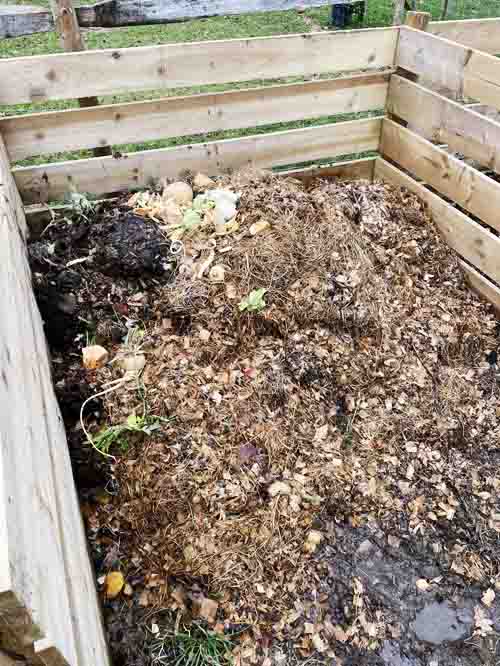
Your pile is shrinking
The bacteria in your heap turns oxygen from the air and carbon from the contents of your composter into energy and carbon dioxide. Water vapor is also being released from the green matter on your heap, and evaporating into the atmosphere. This loss of carbon and water will cause your heap to lose volume and mass over time. In other words, it is getting smaller, and lighter! Your finished compost could weigh less than half the materials your originally put on it.
Weeds and pathogens are being cooked
If your heap gets hotter than 145ºF, then great news – the seeds from annual weeds and the root fragments from perennial weeds are being destroyed! So are many disease-causing bacteria and fungi that could have posed a risk to your plants.
Aerobic vs anaerobic decomposition
The most efficient way to make compost is by harnessing the digestive prowess of aerobic bacteria. Which is why it’s important to help oxygen to permeate your heap, by:
- Making sure it doesn’t get so big that the material at the bottom is squashed.
- Incorporating materials that create small air pockets, like crumpled paper and straw.
- Not letting it get too wet (so that water fills the air pockets).
- Turning or mixing it.
If there isn’t enough oxygen in your compost heap, anaerobic bacteria will start to outcompete aerobic bacteria. Anaerobic bacteria still consume organic matter, but they don’t need oxygen. Anaerobic decomposition is employed on an industrial scale to turn food waste into biogas. And it’s also used by gardeners to turn plants like comfrey and nettles into fertilizer. But it’s a slow, inefficient way of making compost. It also produces a terrible odor, which attracts vermin. Which is why most gardeners try to promote aerobic decomposition instead!
All the other things living in your compost heap
Bacteria are the dominant life forms inside your compost heap, but they’re not alone. They’re sharing it with:
- Fungi. Molds and yeasts are a vital part of any compost heap. They help digest the tough cellulose fibers in plant material, so that decomposing bacteria can get in there and finish the job.
- Viruses. The role of viruses in composting is little understood. But recent research suggests it has also been underestimated, and important viruses are responsible for supporting the bacteria.
- Worms. If your composting container stands on bare ground (as opposed to being a tumbling composter for example) worms will find their way up from the soil into your heap, and help break down the decaying plant matter. Since worms are so beneficial, and sold online and in garden centers, lots of people naturally wonder if they should be adding them to their compost pile. The answer is no – adding them to an open compost pile is pointless (but keeping them in a worm farm is fun!)
- Invertebrates. Besides worms, lots of other invertebrate species like centipedes, millipedes and pillbugs (a.k.a. woodlice), will take up residence in your compost heap. They also feast on the organic matter there and help break it down.
- Larger animals. More complex animals like frogs, toads, newts, hedgehogs, mice and bats can also be found hiding out in compost heaps – either at the edge of a hot pile, or dug deep into a cold pile. They’re especially likely to shelter in compost over winter, since the inside of a compost heap is well insulated.
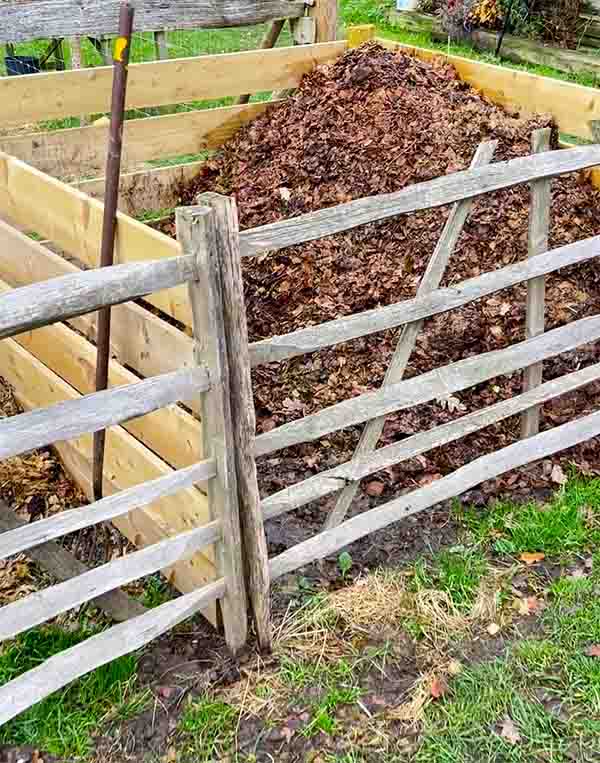
What if nothing seems to be going on inside your compost pile?
An efficiently maintained heap can be finished in 10 – 12 weeks. But the composting process can slow to a halt in unfavorable conditions. If it seems like nothing at all is happening inside a compost heap consider the following possibilities:
- Imbalance of green and brown materials. Compost heaps need equal quantities of nitrogen-rich green material (like grass cuttings) and carbon-rich brown material (like paper or straw). If you have added significantly more of one than the other, try to correct their proportions.
- Not enough oxygen. Turn your heap, and incorporate some straw, crumpled paper or torn up corrugated cardboard as you go.
- Too cold. Depending on how cold your winters are, your heap going dormant might be inevitable in the coldest months. It should rev back into life in spring!
- Too hot. As discussed above, a heap which gets too hot can end up cooking its bacteria, putting the breaks on decomposition. To restart it, turn it over to let the heat out, and incorporate some new green and brown matter to introduce new bacteria.
- Too dry. Bacteria need water, but hot compost heaps are prone to drying out, especially in summer. Soaking them gradually with a sprinkler is more effective at rehydrating them than drenching them with a hose.
- Contaminants. If you’ve added materials containing pesticides or heavy metals (eg. in magazine & newspaper inks) they could be killing off the bacteria in your heap and stifling the composting process.
What’s happening inside your compost pile – summary
The inside of a composter is a thriving ecosystem, working an enormous transformation on your kitchen and garden waste. Cascades of mesophilic and thermophilic bacteria are munching through the organic waste, turning it into rich humus, and generating a lot of heat as they go. Alongside them, many fungi, viruses, and invertebrates are all playing useful supporting roles. Even some larger animals might be enjoying the warmth and protection! Let us know the hottest temperature you’ve recorded inside your heap, or the most unlikely animal you’ve discovered nesting in it, using the comments box down below.

